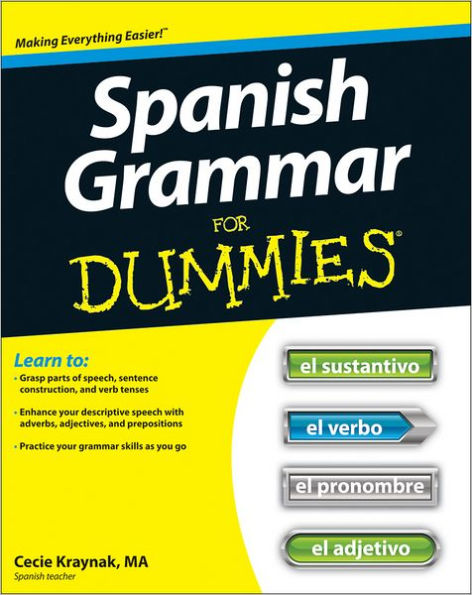Table of Contents
Introduction 1
Part I: Starting with the Basics 7
Chapter 1: Spanish Grammar in a Nutshell 9
Chapter 2: Sounding Out Spanish Words 19
Chapter 3: Naming Things with Nouns and Articles 29
Chapter 4: Describing Stuff with Adjectives 47
Chapter 5: Dealing with Numbers, Dates, and Time 67
Part II: Constructing Simple Sentences and Asking Questions 81
Chapter 6: Writing in the Present Tense 83
Chapter 7: Expressing a State of Being with Ser and Estar 107
Chapter 8: Talking about Action in Progress with the Present Progressive 121
Chapter 9: Replacing Nouns with Pronouns 133
Chapter 10: Expressing Likes and Dislikes 149
Chapter 11: Handling Questions and Exclamations 163
Part III: Beefing Up Your Sentences with More Description 179
Chapter 12: Describing Action with Adverbs 181
Chapter 13: Modifying Meaning with Prepositions 195
Chapter 14: Acting on Oneself with the Reflexive 213
Chapter 15: Using the Passive Voice 227
Chapter 16: It’s All Relative: Making Comparisons 237
Chapter 17: Just Say "No": Negative Words and Expressions 249
Part IV: Talking about the Past or Future 261
Chapter 18: Looking Back with the Preterit 263
Chapter 19: Describing Ongoing Past Action with the Imperfect 281
Chapter 20: Projecting Forward with the Future Tense 295
Chapter 21: Forming Compound Tenses with the Helping Verb Haber 305
Part V: Expressing Conditions and Giving Commands 319
Chapter 22: Wondering "What If" with the Conditional Mood 321
Chapter 23: Taking Command with the Imperative Mood 329
Part VI: The Part of Tens 345
Chapter 24: Ten Common Spanish Grammar Mistakes (And How to Avoid Them) 347
Chapter 25: Ten Useful Spanish Idioms 353
Index 357




